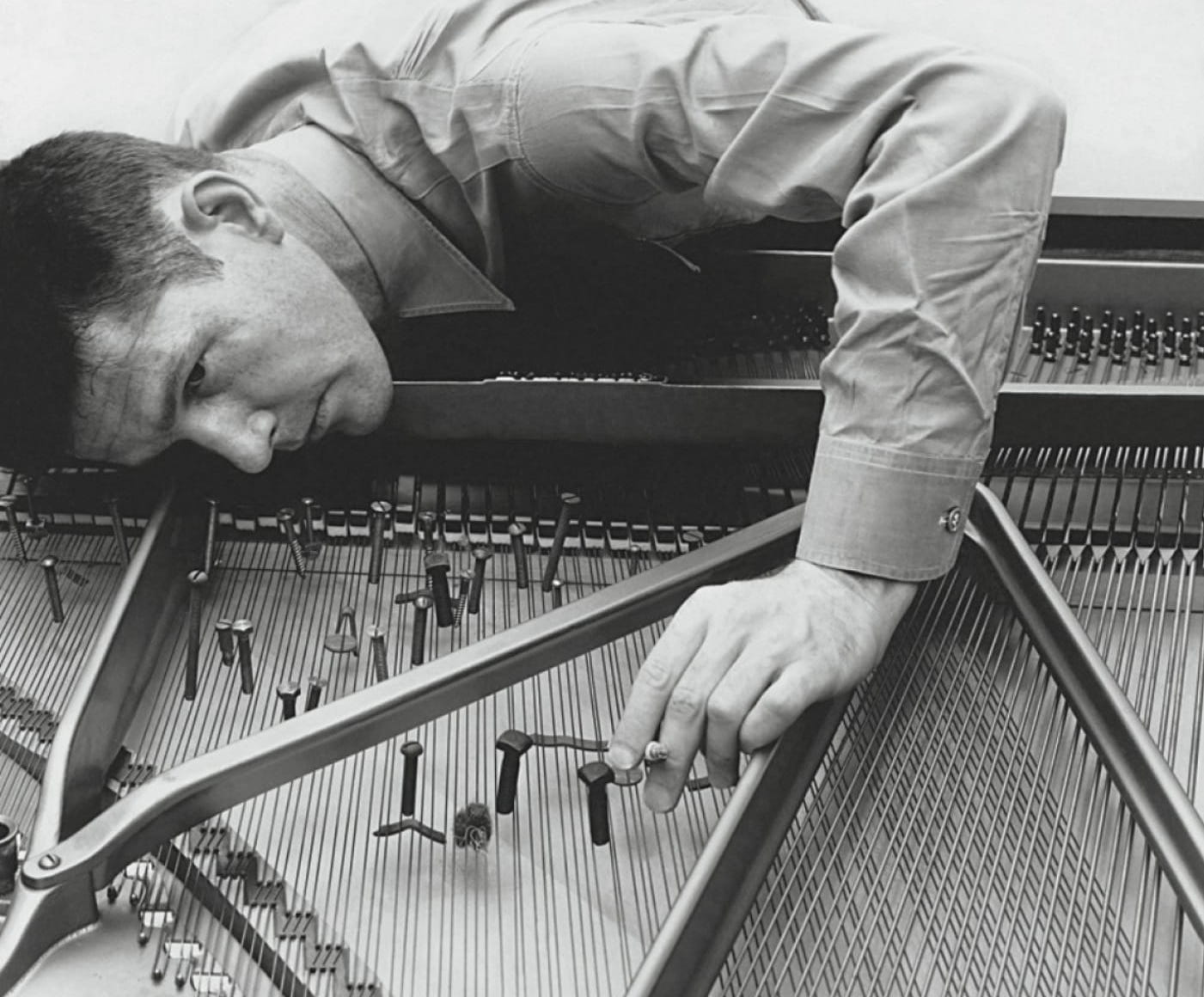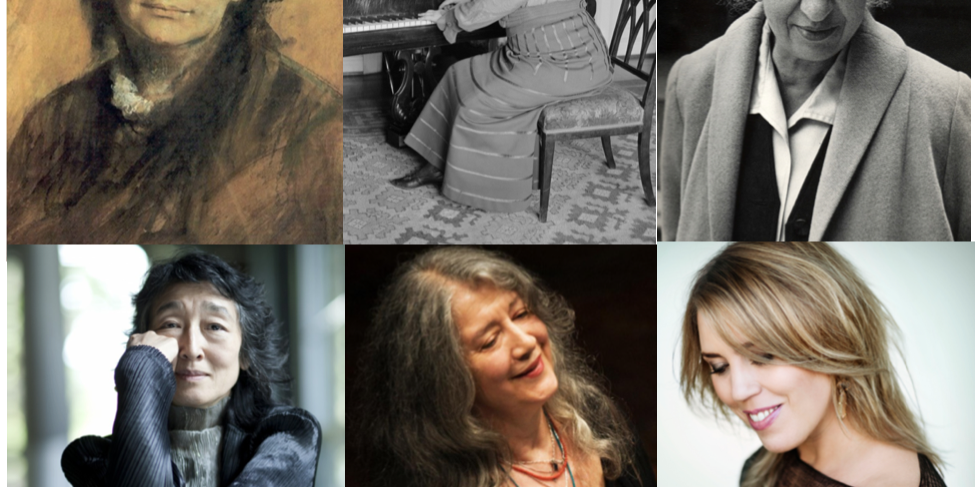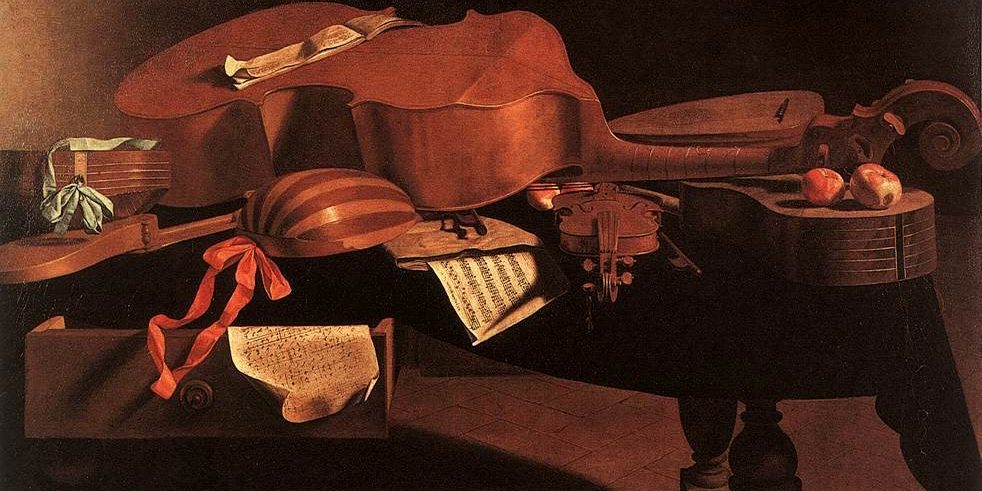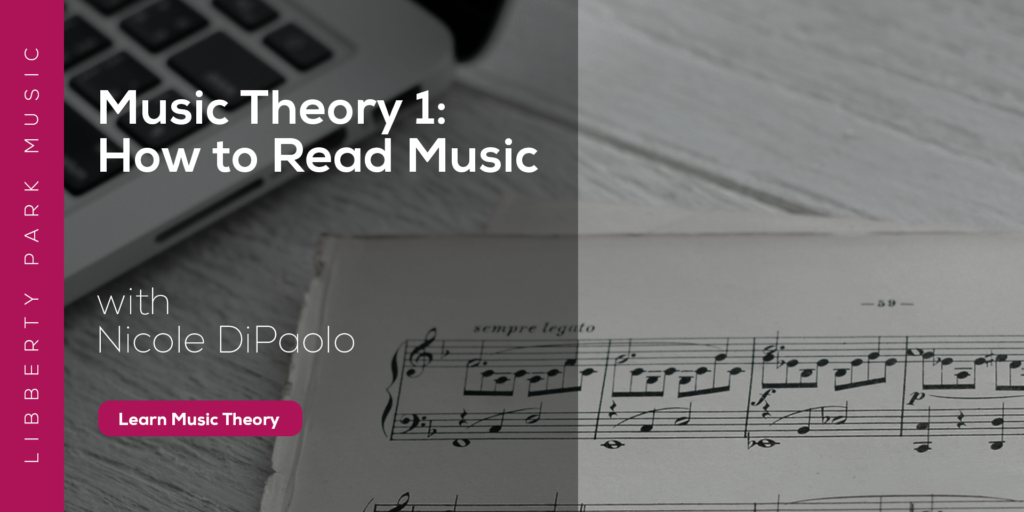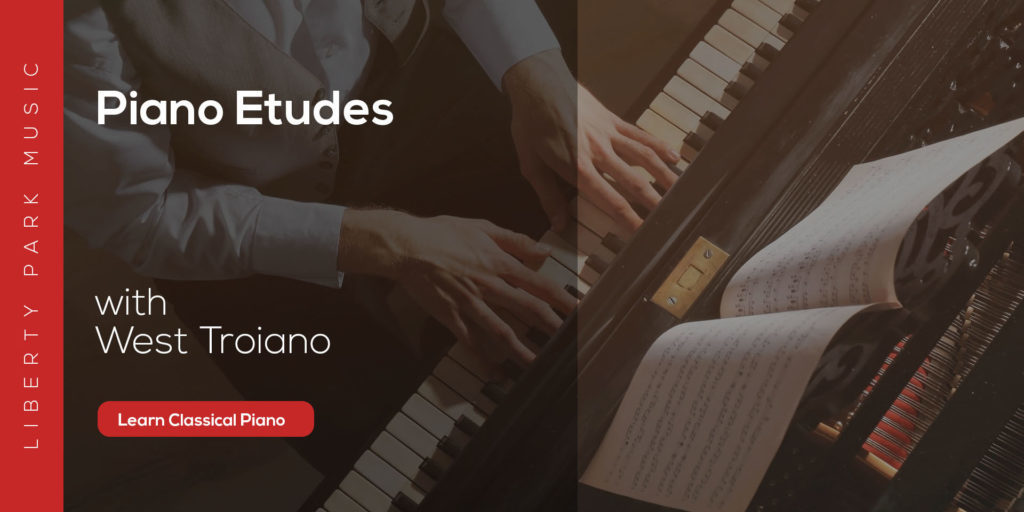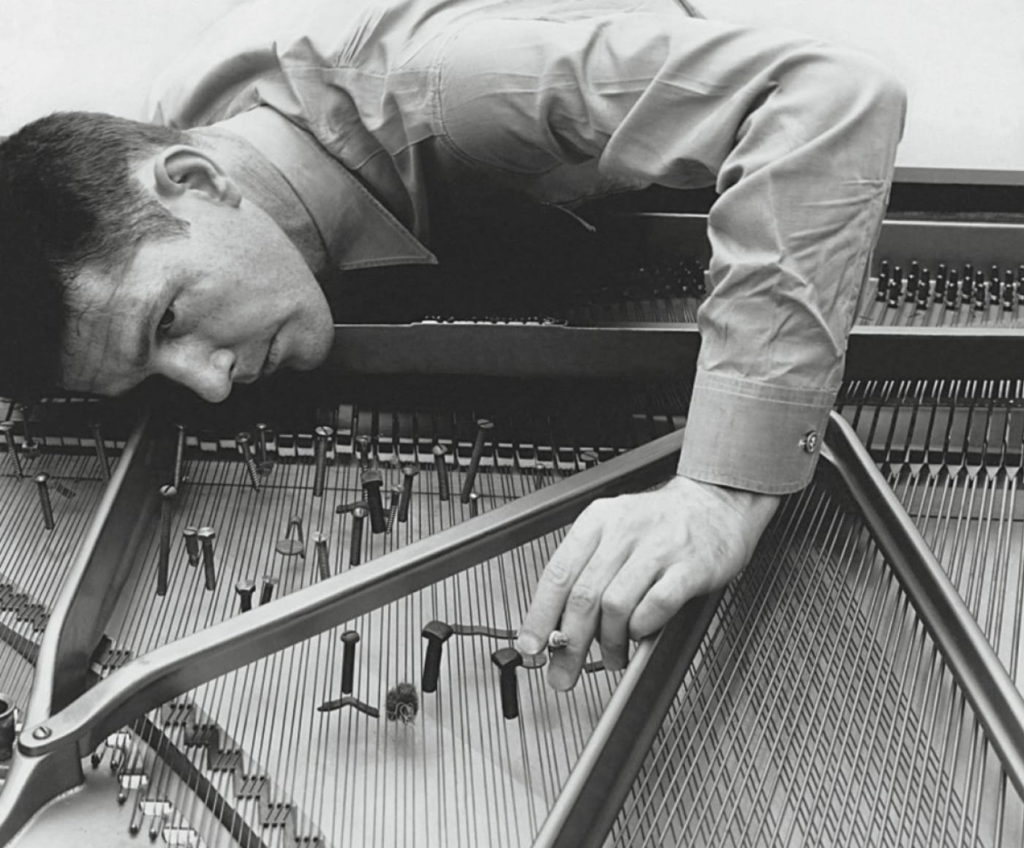
Music historians regularly disagree on dates and periodization in Western Classical Music, but the current general consensus is that we are, at this moment in time, enjoying the Postmodern Period of Music. The term Postmodernism first came into use during the 1970s to describe musical, artistic, and philosophical trends that began around 1945. Postmodernist music expanded on the experimental trends of the modernist period, but also acted as a reaction against those experiments, resulting in a diverse array of compositional designs. A common theme throughout postmodern music was to challenge what music should be, and what it could be.
In general, there are three major paths that Postmodernist composers are drawn to. The first is total control through compositional methods like Total Serialism and Electronic Music. The second is minimal control through deliberately randomized methods like Chance Music and, eventually, Minimalism. The third path looks more to styles of the past and creates a pastiche of modern and the olden, as well as to return to emotional expression through music that would typically be classified as Neo-romantic.
Total Serialism
Composers of Total Serialism continued in the atonal style created by Arnold Schoenberg. They adapted the serialist techniques of pitch selection to elements like rhythm and dynamics. Total serialism also influenced post-tonal theory with the creation of pitch-class sets, which are specific groupings of pitches extracted from the twelve pitches of the chromatic scale. With pitch-class sets, pitches no longer needed alphabetic or syllabic names like “C” or “do,” but were reduced instead to numbers, further removing associations with functional tonality. All twelve chromatic pitches of the octave received a number: C is 0, C-sharp/D-flat is 1, D is 2, D-sharp/E-flat is 3, E is 4, and so on. In our previous article, we showed you the tone matrix for Schoenberg’s Piano Suite Op. 25; here is the tone matrix for Milton Babbitt’s Philomel. In this case, a tone matrix consists of a numerical reordering of the twelve pitches of the chromatic scale, and can be read either horizontally or vertically.
Tone Row Matrix for Milton Babbitt’s Philomel
| I-4 ↓ | ||||||||||||
| P-4→ | 4 | 3 | 5 | 1 | 8 | 10 | 7 | 6 | 11 | 0 | 9 | 2 |
| 5 | 4 | 6 | 2 | 9 | 11 | 8 | 7 | 0 | 1 | 10 | 3 | |
| 3 | 2 | 4 | 0 | 7 | 9 | 6 | 5 | 10 | 11 | 8 | 1 | |
| 7 | 6 | 8 | 4 | 11 | 1 | 10 | 9 | 2 | 3 | 0 | 5 | |
| 0 | 11 | 1 | 9 | 4 | 6 | 3 | 2 | 7 | 8 | 5 | 10 | |
| 10 | 9 | 11 | 7 | 2 | 4 | 1 | 0 | 5 | 6 | 3 | 8 | |
| 1 | 0 | 2 | 10 | 5 | 7 | 4 | 3 | 8 | 9 | 6 | 11 | |
| 2 | 1 | 3 | 11 | 6 | 8 | 5 | 4 | 9 | 10 | 7 | 0 | |
| 9 | 8 | 10 | 6 | 1 | 3 | 0 | 11 | 4 | 5 | 2 | 7 | |
| 8 | 7 | 9 | 5 | 0 | 2 | 11 | 10 | 3 | 4 | 1 | 6 | |
| 11 | 10 | 0 | 8 | 3 | 5 | 2 | 1 | 6 | 7 | 4 | 9 | |
| 6 | 5 | 7 | 3 | 10 | 0 | 9 | 8 | 1 | 2 | 11 | 4 |
Electronic Music
Composers desiring total control over sounds began experimenting with electronic instruments and newly available recording technologies. Electronic instruments like the theremin and, later, synthesizers were cutting edge technologies that could be used to create new and exciting timbres. With magnetic tape, which began to be used for musical purposes in the 1950s, composers found new ways to experiment and take control of sounds. Composers could record instruments, speech, and ambient sounds, and could cut and splice tape together to create sounds unlike any that could be created with standard acoustic instruments. The continued development of audio technology allowed composers to synthesize digital instruments, and to program their performance, opening up a new world of imaginative musical potential that has grown throughout the decades. In tape and computer music, the need for live performers was reduced and performances could exceed the limitations of the human body. Composers also combined acoustic instruments with electronic music, as in Babbitt’s Philomel, which uses a synthesizer, pre-recorded voice on tape, and a live singer.
Chance Music
Composers of chance music, also known as aleatoric music and indeterminacy, relinquished the control sought by serialist composers, and created music based on “chance,” or partially randomized, events. Composer John Cage used a variety of methods to create his aleatoric music, basing many of his processes on his experiences with Eastern philosophy. In Cage’s “Music of Changes,” an ancient chinese divination text called the I-Ching is used to map out possible pitches, rhythms, and dynamics. A die is then rolled to determine the choices of which pitches, rhythms, and dynamics to use. On paper, the method can look very similar to total serialism, but the goal behind Cage’s process was for the composer to relinquish their ego and control, and to realize a form of creation that existed outside of their personal biases or habits. Other ways composers sought to relinquish control of a musical performance was to simply write a few instructions down and let the performers interpret them in the moment. Cage coined these musical events as “happenings” and they could involve musicians, dancers, as well as the audience and general public.
One of the most controversial pieces from this tradition is John Cage’s 4’33. This piece asks the audience to consider the identity of music as a whole, posing the question, “what is music?” For this piece, the performer is instructed to lift the fallboard covering the piano keys, and then to sit silently for the entire movement. The idea is that the action of designating the beginning and ending of the movements allows anything happening within them to be a part of the music, including incidental sounds from the audience and environment.
Here is a part of this piece performed by Liberty Park Music piano instructor West Troiano. As you watch and listen, consider everything you’re hearing. What sorts of things would you consider part of the music?
Minimalism
Minimalism, by definition, uses minimal musical material for its compositions. In this way, it’s seen as a closely related evolution of the earlier chance music. Terry Riley’s “In C” is frequently called both the first indeterminate and minimalist composition. “In C” consists of a series of 53 musical phrases to be played by any number of musicians with no set instrumentation. Performers begin with the first musical phrase and repeat it until each performer on their own decides to move on to the next phrase. This can result in numerous players playing different phrases all at the same time. The piece ends when all performers have finally reached the 53rd musical phrase. Pulling off this piece requires a lot of concentration and listening from all performers, and each performance is unique.
Minimalist compositions by composers like John Adams and Philip Glass have become more popular due to their audience-friendly accessibility and their use of functional tonality. Adams and Glass tend to compose using small units of musical material that largely repeat themselves, incorporating small changes over time. As with Chance music, Minimalism emphasizes the listening process, encouraging the audience to find significance in the incremental musical changes.
Neo-Romanticism
Not all composers of the Postmodern period have felt compelled to pursue the extreme experimentalism of the previously covered styles. Some, like the Neoclassicists of the Modern period, have chosen to reach back to historical music to create modern pastiches. Today we refer to this movement as “Neo-Romanticism.” Neo-Romantics returned to tonality, relied on the formal conventions of previous eras, and used quotations from earlier music in their new compositions. Composer Ellen Taaffe Zwillich drew on earlier classical forms in her Symphony No. 1, which was the first composition by a woman to be awarded a Pulitzer Prize in music. In these pastiche style compositions, composers also drew on world music and popular music. For example, Chinese American composer Chen Yi incorporates traditional Chinese harmonies and folk songs in many of her compositions.
Conclusion
Musical experiments and combinations of styles continue to expand and evolve into the modern era. The borders between musical styles continue to blur, and methods of composition and musical dissemination are diversifying with ever-increasing frequency The continuing evolution of technology and the dwindling boundaries between our global connectivity virtually guarantee that there are many more periods of musical identity to come!
Here is a list of some of the major composers of the Postmodern Period:
John Adams (b. 1947), Louis Andriessen (b. 1939), Milton Babbitt (1916-2011), Samuel Barber (1910-1981), Luciano Berio (1925-2003), Leonard Bernstein (1943-1990), Benjamin Britten (1913-1976), William Bolcom (b. 1938), Pierre Boulez (1925-2016), John Cage (1912-1992), Elliott Carter (1908-2012), George Crumb (b. 1929), Vivian Fine (1913-2000), Philip Glass (b. 1937), Sofia Gubaidulina (b. 1931), Jennifer Higdon (b. 1962), György Ligeti (1923-2006), Gian Carlo Menotti (1935-1995), Olivier Messiaen (1908-1992), Pauline Oliveros (b. 1932-2016), Arvo Pärt (b. 1935), Krzysztof Penderecki (1933-2020), Steve Reich (b. 1936), Terry Riley (b. 1935), George Rochberg (1918-2005), Kaija Saariaho (b. 1952), Alfred Schnittke (1934-1998), Dmitri Shostakovich (1906-1975), Karlheinz Stockhausen (1928-2007), Michael Tippett (1905-1998), Edgar Varese (1883-1965), Iannis Xenakis (1922-2001), La Monte Young (b. 1935), and Ellen Taaffe Zwillich (b. 1939)
And here are some musical examples to help you explore the sounds of Postmodernism:
Musical Examples from this Period
Messiaen’s Quartet for the End of Time
Penderecki’s Threnody to the Victims of Hiroshima
Crumb’s “From Where do you come, my love, my child?” from Ancient Voices of Children
Oliveros’ “Ione” from Deep Listening
Adams’ Short Ride in a Fast Machine
Glass’ “Knee Play 1” from Einstein on the Beach
Zwillich’s Symphony No. 1, mvmt 1
Shostakovich’s Piano Concerto No. 2 mvmt 1
Thanks for reading! Keep an eye out for more articles on music history, and for our Composer Bios article series, where we will survey the lives and music of your favorite classical composers.

